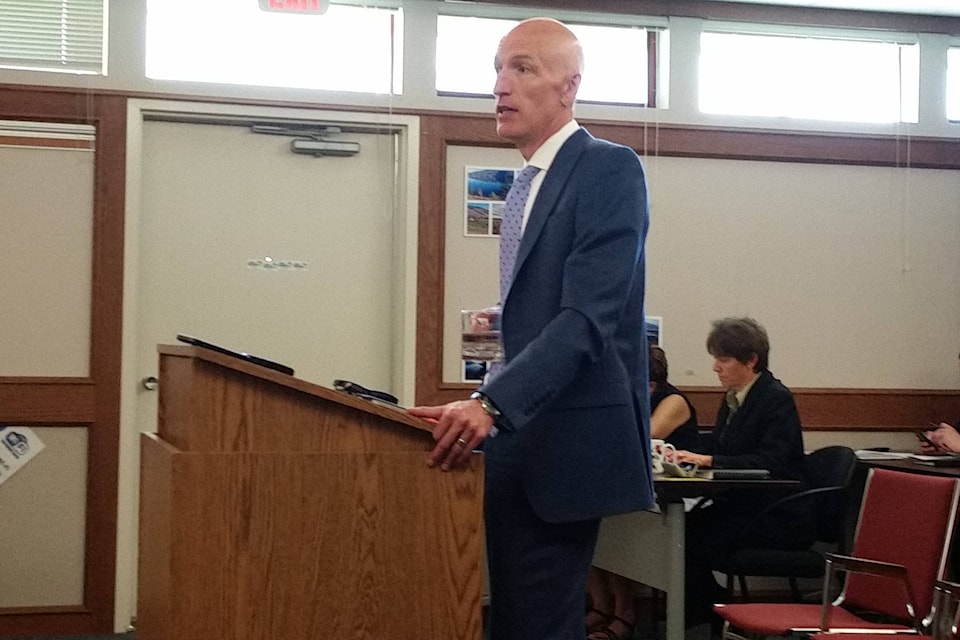It’s a lofty goal for Interior Health: provide clean, safe, reliable water for all people at all times, and be 100 per cent compliant with the guidelines for Canadian Drinking Water Quality.
Lofty, yes. Attainable, though?
“There is this interesting understanding or belief system through most of the Interior Health region, but certainly in the Okanagan, that water is pristine; that the water around us is clean and fantastic,” said Dr. Trevor Corneil, IHA’s chief medical officer, addressing Greater Vernon Advisory Committee directors on his report: Drinking Water in Interior Health, released in January.
“Well it is, but it’s not necessarily clean enough for drinking and that’s the problem.”
As an example, Corneil talked about the discovery of arsenic in the water after the Mt. Polley mine disaster in the Cariboo a couple of years ago, and how the discovery was upsetting to the community.
“There’s arsenic in all the water in lakes in B.C.,” he said. “The belief system is the water is pure, but that’s not the reality. The reality is water has limitations in terms of health, particularly when dealing with large populations, and we need to address that with all the tools we have in our tool box.”
Corneil’s report looks at the progress of water purveyors in meeting provincial standards, and reviews health impacts from waterborne diseases, assesses the number of public notifications in relation to water system improvments and the implementation of a multiple-barrier approach to protecting public health.
Interior Health oversees more than 1,900 individual drinking water systems in its region, and Corneil said IH works collaboratively with its First Nations partners with respect to hundreds more.
The IH team within its Drinking Water Program “works hard to understand the challenges and opportunities of each water system.”
“Our biggest focus is around community engagement,” he said, referring to the up-and-running website drinkingwaterforeveryone.ca. “The website is an opportunity to begin a dialogue and educate those who need education on what clean water is from a health perspective. That’s a piece we haven’t done at the regional level and we are committed to moving forward with that.”
Corneil told GVAC directors there is support available in terms of funding capital improvements.
“There are infrastructure funding grants and capital grants,” he said. “Interior Health’s role is to help provide you with what you need to put together your applications. The better the application,and the more criteria it meets with respect to the Candian Drinking Water guidelines, the stronger letter of support we’re able to write in terms of funding.
“Our job is really to help you as a committee address what grants are available to you and how you might look to fund what is full treatment, including filtration, of both your major sources (Duteau Creek and Kalamalka Lake) in the years to come.”
GVAC chairperson Juliette Cunningham said it’s encouraging for directors that discussions are happening about the recognition that the Regional District of North Okanagan need help in term of funding.
“For us that’s been the biggest challenge,” said Cunningham. “It appears to me there is a willingness to work with us.”
